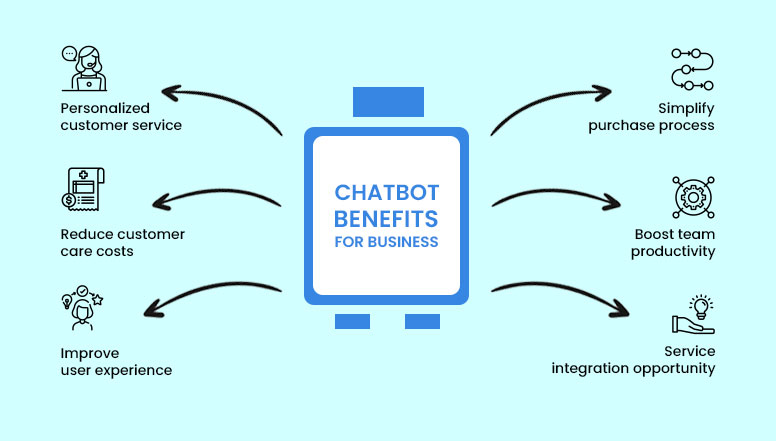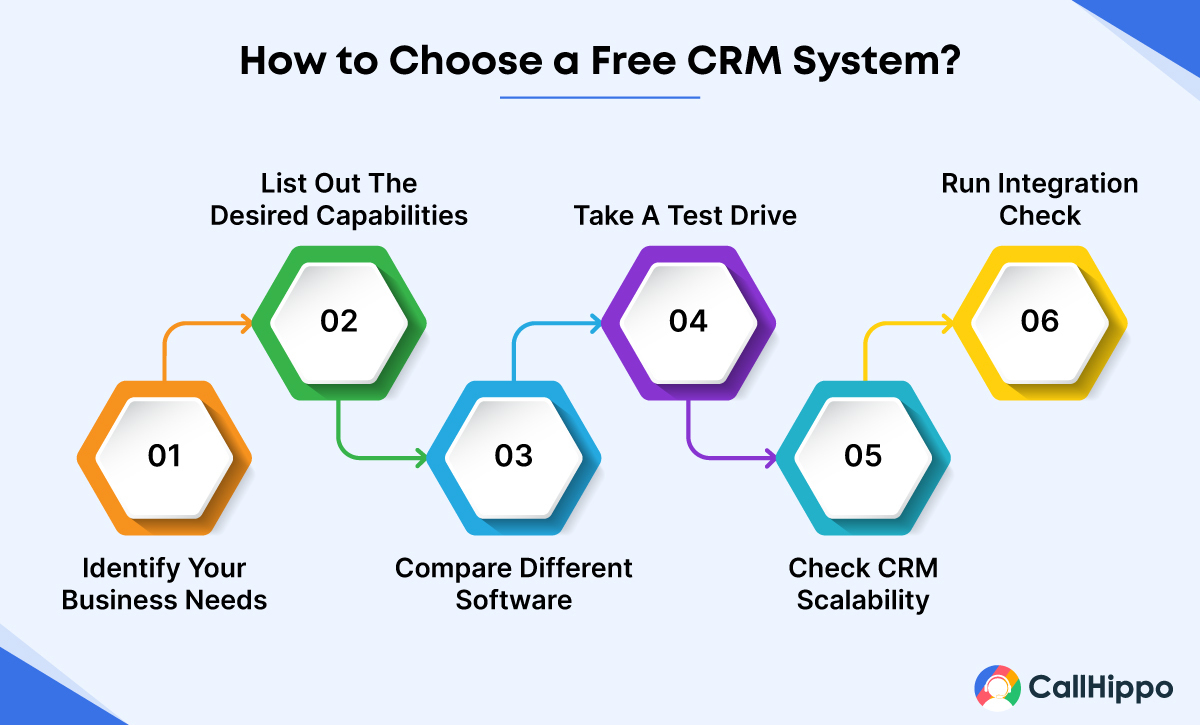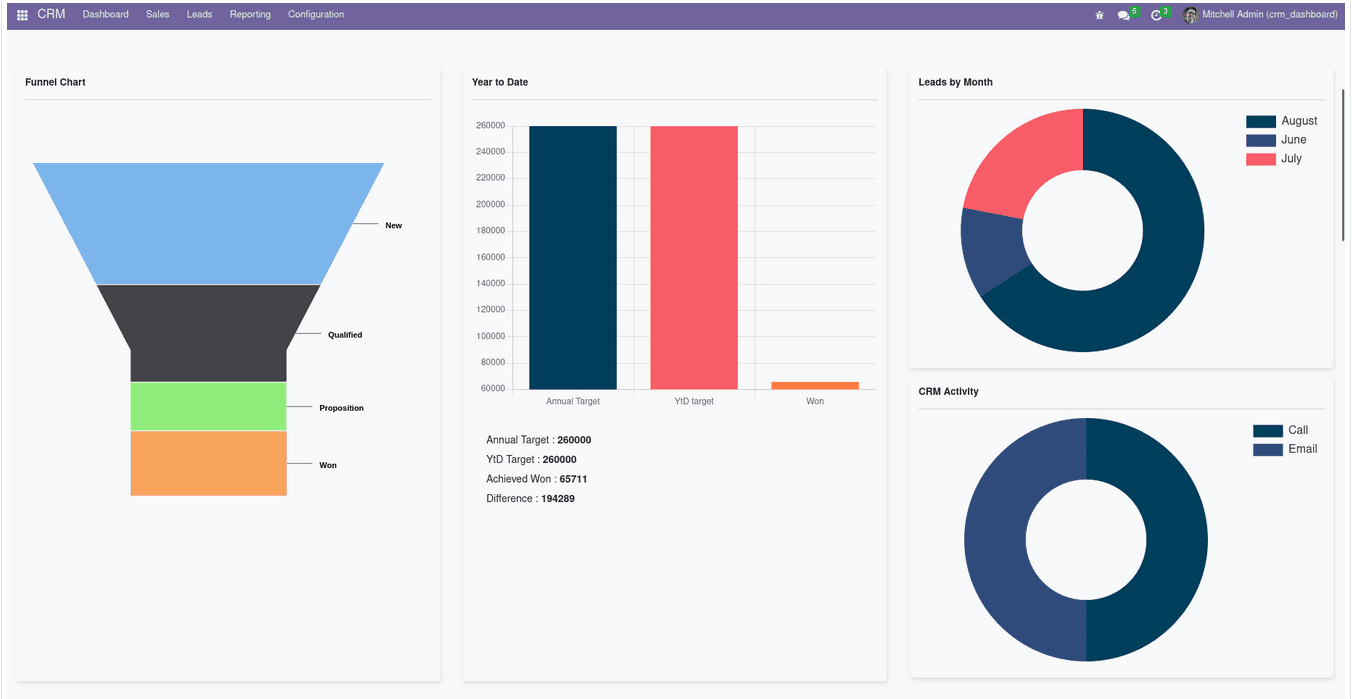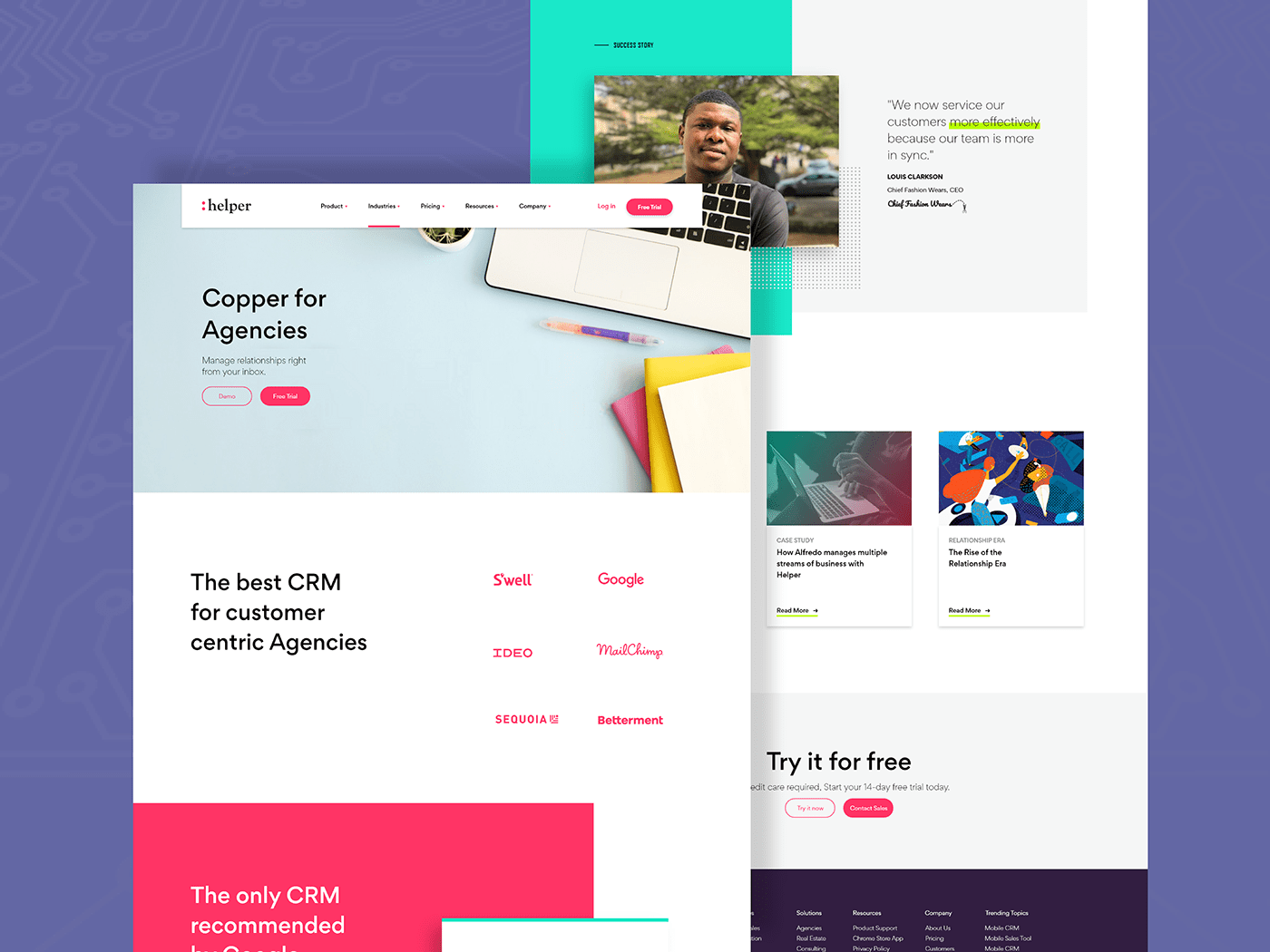Supercharge Your Marketing: A Deep Dive into CRM and Chatbot Integration

Supercharge Your Marketing: A Deep Dive into CRM and Chatbot Integration
In today’s fast-paced digital landscape, businesses are constantly seeking innovative ways to connect with customers, streamline operations, and boost their bottom line. One powerful combination that’s transforming the marketing world is the integration of Customer Relationship Management (CRM) systems with marketing chatbots. This dynamic duo offers a wealth of benefits, from enhanced customer engagement to improved lead generation and personalized experiences. In this comprehensive guide, we’ll delve deep into the world of CRM and chatbot integration, exploring its advantages, practical applications, and how you can leverage this technology to achieve remarkable marketing success.
Understanding the Power of CRM and Chatbots
Before we dive into the nitty-gritty of integration, let’s establish a solid understanding of each component. A CRM system is the central hub for managing customer interactions and data. It stores crucial information like contact details, purchase history, communication logs, and preferences. CRM systems provide a 360-degree view of each customer, enabling businesses to personalize their interactions and build stronger relationships.
On the other hand, a chatbot is a conversational AI program designed to simulate human-like conversations. Chatbots can be deployed on various platforms, including websites, messaging apps (like Facebook Messenger and WhatsApp), and even SMS. They can handle a wide range of tasks, from answering frequently asked questions and providing product recommendations to qualifying leads and scheduling appointments. Think of them as your always-on virtual assistants, ready to assist customers around the clock.
The Synergy: CRM and Chatbot Integration
When you bring these two powerhouses together, the possibilities are truly exciting. CRM and chatbot integration allows you to:
- Personalize Customer Interactions: Chatbots can access customer data stored in the CRM, enabling them to address customers by name, recall past purchases, and tailor their responses based on individual preferences.
- Automate Lead Qualification: Chatbots can qualify leads by asking a series of targeted questions and automatically updating the CRM with relevant information. This saves your sales team valuable time and ensures they focus on the most promising prospects.
- Improve Customer Service: Chatbots can handle a large volume of customer inquiries, freeing up human agents to address more complex issues. They can also provide instant answers to common questions, improving customer satisfaction.
- Enhance Data Collection: Chatbots can collect valuable customer data during conversations, which can be automatically added to the CRM. This helps you gain a deeper understanding of your customers and their needs.
- Streamline Sales Processes: Chatbots can guide customers through the sales funnel, providing product recommendations, answering questions about pricing and features, and even facilitating purchases.
Key Benefits of CRM and Chatbot Integration
The advantages of integrating CRM and chatbots are numerous and far-reaching. Here’s a closer look at some of the key benefits:
Increased Efficiency and Productivity
By automating repetitive tasks and providing instant answers to customer queries, integrated systems free up valuable time for your sales and customer service teams. They can focus on more complex issues, build stronger relationships, and close more deals. This boost in efficiency translates to increased productivity and a higher return on investment (ROI).
Improved Customer Experience
Personalized interactions, instant responses, and 24/7 availability all contribute to a superior customer experience. Customers appreciate the convenience of getting their questions answered quickly and efficiently, leading to increased satisfaction and loyalty. Chatbots can also proactively engage with customers, offering support and guidance when they need it most.
Enhanced Lead Generation and Qualification
Integrated chatbots can be deployed on your website and social media channels to capture leads and qualify them based on their interactions. They can ask targeted questions, gather relevant information, and automatically update the CRM with lead data. This streamlines the lead generation process and ensures your sales team focuses on the most promising prospects, significantly boosting conversion rates.
Data-Driven Decision Making
The integration of CRM and chatbots provides a wealth of data that can be used to make informed business decisions. You can track customer interactions, analyze chatbot conversations, and identify trends in customer behavior. This data-driven approach allows you to optimize your marketing campaigns, improve your products and services, and ultimately achieve better results.
Cost Savings
By automating customer service and sales processes, integrated systems can help you reduce labor costs and improve operational efficiency. Chatbots can handle a large volume of inquiries, reducing the need for human agents and freeing up your team to focus on more strategic initiatives. The efficiency gains and cost savings make this integration a smart investment for businesses of all sizes.
How to Integrate CRM and Chatbots: A Step-by-Step Guide
Integrating your CRM and chatbot may seem daunting, but with the right approach, it can be a smooth and rewarding process. Here’s a step-by-step guide to help you get started:
1. Choose the Right Tools
The first step is to select a CRM system and chatbot platform that meet your specific needs. Consider factors such as:
- CRM Features: Does the CRM offer the features you need, such as contact management, sales automation, and reporting?
- Chatbot Capabilities: Does the chatbot platform offer the features you need, such as natural language processing (NLP), integrations with other platforms, and the ability to create custom workflows?
- Integration Options: Does the CRM and chatbot platform integrate seamlessly with each other? Look for platforms that offer pre-built integrations or robust APIs.
- Scalability: Can the platforms handle your current and future needs as your business grows?
- User-Friendliness: Are the platforms easy to use and navigate?
- Pricing: What is the pricing structure of the platforms? Does it fit within your budget?
2. Plan Your Integration Strategy
Before you begin the integration process, it’s essential to develop a clear strategy. Define your goals, identify the key data points you want to share between your CRM and chatbot, and map out the workflows you want to automate. Consider the following:
- Define Your Goals: What do you hope to achieve with the integration? (e.g., improve lead generation, enhance customer service, increase sales)
- Identify Data Points: Which data points do you want to share between the CRM and chatbot? (e.g., contact information, purchase history, conversation logs)
- Map Out Workflows: How will the CRM and chatbot interact with each other? (e.g., chatbot captures lead information and updates the CRM, CRM triggers chatbot to send follow-up messages)
- Consider User Experience: How will the integration impact the user experience for both your customers and your team?
3. Set Up the Integration
Once you’ve chosen your platforms and developed your strategy, it’s time to set up the integration. The specific steps will vary depending on the CRM and chatbot platforms you’re using, but generally, you’ll need to:
- Connect the Platforms: Use the integration tools provided by your CRM and chatbot platforms to connect them. This may involve using pre-built integrations, APIs, or third-party integration platforms.
- Configure Data Mapping: Map the data fields between your CRM and chatbot. This ensures that data is transferred correctly between the two systems.
- Set Up Workflows: Configure the workflows that will automate your processes. This may involve creating rules, triggers, and actions that define how the CRM and chatbot interact with each other.
- Test the Integration: Thoroughly test the integration to ensure it’s working as expected. Verify that data is being transferred correctly and that the workflows are functioning properly.
4. Train Your Team
Once the integration is set up, it’s crucial to train your team on how to use the new system. Provide them with the necessary training materials, documentation, and support to ensure they can effectively utilize the integrated CRM and chatbot. This includes:
- Provide Training: Conduct training sessions to familiarize your team with the new system.
- Create Documentation: Develop user manuals, FAQs, and other documentation to guide your team.
- Offer Ongoing Support: Provide ongoing support to address any questions or issues that arise.
5. Monitor and Optimize
The integration process doesn’t end with the initial setup. It’s important to continuously monitor the system’s performance and make adjustments as needed. Track key metrics, analyze customer interactions, and identify areas for improvement. This will help you optimize your marketing efforts and achieve the best possible results.
- Track Key Metrics: Monitor metrics such as lead generation, customer satisfaction, and conversion rates.
- Analyze Customer Interactions: Analyze chatbot conversations to identify areas for improvement.
- Make Adjustments: Make adjustments to your workflows, chatbot scripts, and CRM settings as needed.
Practical Applications of CRM and Chatbot Integration
The potential applications of CRM and chatbot integration are vast and varied. Here are some real-world examples of how businesses are leveraging this technology:
Lead Generation and Qualification
Chatbots can be deployed on your website to capture leads and qualify them based on their interactions. They can ask a series of targeted questions, gather relevant information, and automatically update the CRM with lead data. This streamlines the lead generation process and ensures your sales team focuses on the most promising prospects.
Example: A real estate company uses a chatbot on its website to ask visitors about their property preferences, budget, and timeline. The chatbot then automatically adds qualified leads to the CRM, along with their contact information and preferences. This allows the sales team to follow up with personalized offers and schedule property viewings efficiently.
Customer Service Automation
Chatbots can handle a large volume of customer inquiries, freeing up human agents to address more complex issues. They can provide instant answers to common questions, such as order status, shipping information, and product details. This improves customer satisfaction and reduces wait times.
Example: An e-commerce store uses a chatbot to answer customer questions about product availability, returns, and exchanges. The chatbot can access order information from the CRM and provide customers with real-time updates on their orders. If a customer has a more complex issue, the chatbot can seamlessly transfer them to a human agent, along with the relevant conversation history.
Personalized Marketing Campaigns
By accessing customer data stored in the CRM, chatbots can personalize their interactions and tailor their responses based on individual preferences. This allows you to deliver highly targeted marketing messages and improve engagement.
Example: A clothing retailer uses a chatbot to recommend products based on a customer’s past purchases and browsing history, which is stored in the CRM. The chatbot can also send personalized promotional offers and discounts based on the customer’s preferences. This personalized approach increases customer engagement and drives sales.
Appointment Scheduling and Reminders
Chatbots can integrate with your CRM to schedule appointments and send reminders to customers. This is particularly useful for businesses that rely on appointments, such as doctors’ offices, salons, and consulting firms.
Example: A dentist uses a chatbot to allow patients to schedule appointments online. The chatbot can access the CRM to check for available appointment slots and send automated reminders to patients before their appointments. This reduces no-shows and improves the efficiency of the practice.
Sales Automation
Chatbots can guide customers through the sales funnel, providing product recommendations, answering questions about pricing and features, and even facilitating purchases. This can help you streamline your sales processes and increase conversion rates.
Example: A software company uses a chatbot to guide potential customers through the product selection process. The chatbot can ask questions about the customer’s needs and recommend the best software plan. It can also answer questions about pricing, features, and support. The chatbot can then seamlessly transfer the customer to a sales representative if they’re ready to make a purchase.
Best Practices for Successful CRM and Chatbot Integration
To maximize the benefits of CRM and chatbot integration, it’s important to follow these best practices:
- Define Clear Goals: Before you begin, clearly define your goals for the integration. What do you want to achieve?
- Choose the Right Platforms: Select CRM and chatbot platforms that meet your specific needs and integrate seamlessly.
- Prioritize Data Privacy: Ensure that you comply with all relevant data privacy regulations, such as GDPR and CCPA.
- Personalize Interactions: Use customer data to personalize your chatbot interactions and tailor your responses.
- Provide Seamless Handoffs: Ensure that customers can seamlessly transition from the chatbot to a human agent if needed.
- Train Your Team: Provide your team with the necessary training and support to effectively utilize the integrated system.
- Monitor and Optimize: Continuously monitor the system’s performance and make adjustments as needed.
- Keep it Conversational: Design your chatbot conversations to be natural and engaging, avoiding overly robotic language.
- Test Thoroughly: Test all integrations and workflows thoroughly before launching.
- Continuously Improve: Regularly analyze data and customer feedback to identify areas for improvement and refine your chatbot’s performance.
The Future of CRM and Chatbot Integration
The integration of CRM and chatbots is a rapidly evolving field, and the future holds exciting possibilities. Here are some trends to watch:
- AI-Powered Personalization: Expect to see even more sophisticated AI-powered personalization, enabling chatbots to understand customer intent and provide highly relevant recommendations and support.
- Advanced Analytics and Reporting: CRM and chatbot platforms will offer more advanced analytics and reporting capabilities, providing deeper insights into customer behavior and marketing performance.
- Integration with Emerging Technologies: We’ll see more integration with emerging technologies like voice assistants, augmented reality, and the metaverse, creating even more immersive and engaging customer experiences.
- Increased Automation: Expect to see even more automation of marketing and sales processes, freeing up human agents to focus on more strategic initiatives.
- Focus on Data Security and Privacy: As data privacy regulations become more stringent, expect to see a greater focus on data security and privacy in CRM and chatbot platforms.
The synergy between CRM and chatbot integration is undeniable. By combining the power of customer data management with the conversational capabilities of AI, businesses can create more personalized, efficient, and engaging customer experiences. This integration is not just a trend; it’s a fundamental shift in how businesses interact with their customers. By embracing this technology and following best practices, you can unlock significant advantages in terms of efficiency, customer satisfaction, and ultimately, your bottom line. Start exploring the possibilities today and see how CRM and chatbot integration can revolutionize your marketing efforts.




